Each gardener on its plot seeks to plant and grow not only beautiful and decorative plants, but also plants that have a large number of useful properties. The chamber is a well-known perennial plant that has long been used in folk medicine. This small creeping shrub has a simply incredible aroma, which has a soothing property.
Content |
The wonderful grass of a chabret or thyme creeping can be found in the fields, meadows and even in the mountains, where she under the rays of the sun is absorbed by all the most beneficial properties that are then revealed with a whole bouquet in freshly prepared tea or infusion with a chamber. It is not completely difficult to grow such a wonderful plant in its garden in the open ground, besides, it can be used as an element of landscape design.
In this article, consider the peculiarities of the Thyme or Thyme of Czczuchy, we present the characteristics of popular and used varieties of this culture. We note the important moments of the agricultural equipment of the cultivation of the Thyme in the open soil.
Features and Botanical Description
The chabret is the national Russian-speaking name of Thyme Czczuchy. Many assign this name to the whole genus of Thyme, but this is not entirely true. The chabret is a perennial semi-stabbed or shrub, which is widely spread throughout the continents and faced all gardeners not only the wonderful sweet aroma, but also valuable decorative properties. Thyme creeping or a chabral refers to a very complex family of clarotonic, which includes the most famous aromatic plants. Many intense gardeners and simply lovers of beautiful plants amazing what a chamber looks like. These are dense and low carpets of bright lavender flowers, which are covered near the underlying territories, thereby creating beautiful landscape compositions.
Where does the chamber grow? The natural area of \u200b\u200bhabitat of this wonderful plant is the territory of almost the whole globe, more specifically lavender flowers of the chabarmist can be found in North Africa, Eurasia, America and even Greenland. In our country, this plant is also found everywhere: in Siberia, in the Caucasus, in Transbaikalia. The chabret or thyme creep prefer to grow on forest ravines and small slopes, as well as on arable land on the quilts, growing pretty quickly into large carpets of purple or lavender shade.
The scientific name of the Timyan Chacclast happened from the ancient Greek word "Fimiam", which in translation denotes the "incense substance", which is associated directly with the wonderful aroma, exuded with small twigs and flowers of the chasty. Even in the ancient times, the Roman warriors Avicenna added dried twigs of the Cabinet to the water during the adoption of the bath. It was believed that it gives them cheerfulness and restores the strength to new battles. This plant has many people's names, which are characterized by a chamber from different sides. In the literature you can meet such definitions like Bogorodskaya grass, Chebark, lemon souls, Fimiamist and others. In the time of ancient Russia, the chabral was called Bogorodskaya grass, as her branches were made to decorate their home for the feast of the Holy Trinity. Also, the thyme branches were used for the decorations of the icon of the Holy Virgin.
Castabre description:
- The chamber is a low perennial shuttle or semi-staples that form small turfs.
- In the height of the plant, the chamber can reach only 15-20 cm and is formed by a large number of small twigs.
- The stalk of the chastard or thyme is crazy, griming along the ground, can form apparent roots. Very branched, and from the bottom of the weird. Stem thick covered with rising branches - grassy flowers.
- The stems have a cylindrical shape, while the lower part of small twigs has a slight omission.
- Cabin leaves are very small, thin, green. Sheet plate has an oval ovoid shape. The length of one leaf is approximately 1 cm. If you look at the Cabinian leaf under the glass, you can immediately see the ester-solid glands, which this plant has a lot. The leaves on the branches are located oppositely on small stiffs.
- Flowers of the chastard are small, on the shape of two-bobbeds on the ends of small twigs and are collected in the inflorescence of false mutations.
- The main shade of the colors of the violet-lavender violet, sometimes with a pink overflow. Among the many varieties of thyme, there are plants with paints of carmine, white, pure pink shade.
- The flowering of the chasty begins approximately at the end of May or in early June and lasts until the end of July.
- During flowering from the plant, a wonderful spicy flavor breaks out, which is of different strength, depending on a certain variety of vocabulary.
- In August, the fruits of the thyme are beginning to ripen, which are small seed boxes with four black nuts. These nuts are used in cooking as seasonings.
Useful properties of the chasty and its use
A long-time chabret is used as a medicinal medicine in traditional medicine. It has a huge amount of beneficial properties and elements that make this plant so valuable. It can be noted a large amount of essential oil, tanning substances, gum, bitterness, organic pigments, minerals. All of these components that are contained in the upper part of the plant are characterized by all the useful properties of the thyase and its use.
- It has excellent expectorant property. It is able to strengthen the secretion of bronchi and facilitate the flow of sputum.
- Another property of the chabar is antimicrobial. Preparations with its participation can be used for disinfection of the mucous membranes of the nose, mouth, pharynx. In addition, this plant can also be used to treat fungal diseases.
- Today in the pharmacy you can purchase a large number of drugs, which include a chamber. For example, peptissin. These syrups are used to facilitate wet wet when bronchial asthma, pneumonia, cough.
- The fascinated chamber can be used to prepare info, teas, fragrant baths.
- The chamber is often used in cosmetology due to the large content of essential oils.
- The chamber is a drug, so before its use, it is necessary to carefully examine contraindications and, if possible, consult with the doctor.
Variety of types and varieties of the chasty
Chabrket Go Thyme Creeping is a natural view of this culture, which is quite often found in the wild. The breeders of it and some other species of thyme took the basis for the removal of completely new, more decorative varieties of the chastard, which without any problems can be grown independently in the open ground on their plot. Consider the most popular videos of the grade of the videos.
- Chabret or thyme creeping "rainbow". It is a long-term semi-staple, which in one place can grow about 5 years. Rising branches can rise to 20-25 cm. Leaves are small, egg-shaped oblong shape, in length reach 1 cm. The shade of the leaf plate is gray-green. On the flower branches blooms small flowers of a bright purple-pink shade. This variety of vocabulary has medicinal properties, and can also be used. The leaves of thyme crawling rainbow, as well as young shoots, can be used as seasonings.
- Chabret "Bogorodsky Semko." Another variety of the chasty or thyme crawling, which has rated popularity among gardeners. The semi-cup is formed by stalks and small, creeping branches that cling to the soil and form a dense turf. The stem has a feature to produce additional roots. In height, the plant can reach about 15-20 cm. The leaves are small, have a silver-green shade and a very pleasant fragrance. Can be used in food as seasonings, as they have a specific tidal bitter taste. In June, pinkish-lilac flowers are blooming, collected on the tops of the branches in false-blurred inflorescences.
- Chabret or thyme creeping "Silver Queen". Forming stem and young shoots that together create a little loose carpet. In the height of the semi-stationist of this variety can reach about 20 cm. The leaves whose sheet plate has a silver-green color in the center and white-cream on the edge of the special pride of this plant. Venas in landscape design. In June-July, he begins to bloom with light and lush purple flowers.
- Chabret or thyme creeping "Kolkhida". This variety of the chabreca is just an ideal soil plating, which is perfect for the design of various alpine slides and garden tracks. The height semi-stabinant reaches only 10 cm. This variety is also popular among the gardeners with their long blossom, which begins in June and lasts until August. A dense carpet from light green small leaves is covered during flowering with bright lilac flowers that exude a wonderful fragrance.
- The chamber "Donna Valley". Stems and small young shoots of this variety form a dense carpet, which in height can rise by about 10-15 cm. Leaves of small size, oval oblong shape, painted into a light green shade with a yellow border along the edge of the sheet plate. During flowering, thick is covered with small pinkish flowers.
Castabre reproduction: the most common ways
To plant and grow a chamber or thyme creep on its site will not be difficult even in the absence of serious experience in growing plants. You can use some popular methods for reproduction of this culture to acquire in its garden with such a valuable and useful plant. To breed a chabret yourself, you can use the following methods: seed reproduction, reproduction with cuttings and division of the thyme bush. Each option has its own rules and features, from the competent execution of which will depend on the full growth of the chasty.
Seed breeding of vagaza
- The reproduction of the Cabinet seeds is the easiest way to produce young seedlings of the medicinal plant. In addition, in comparison with the reproduction of cuttings and the division of the bush, the method of seed reproduction is most safe and painless.
- First of all, it is necessary to collect planting material. Cabin seeds can be bought in any garden center or nursery, and if there is this wonderful plant in its area, seeds can be collected independently.
- Collect the seeds of the chastard is necessary after the end of flowering at the beginning of autumn, after which they are necessarily dried to the spring itself. The optimal time for seeding seed is spring, although autumn landing is allowed.
- Cabin seeds can be soiled both directly in open ground and in greenhouses and in containers. In the open soil, the seeds are sown around May, and when landing seeds to seedlings, it is necessary to focus on March, so that in May you already plan the rapid seedlings in the garden.
- Seeds before planting must be soaked for about 12 hours in warm water.
- Prerequishly thoroughly prepare the container with soil mixture. Some gardeners use a substrate for cactus seeds for cacti, simply plunge into it a little chernozem. However, you can and independently make the desired mixture, for this simply connect the sand and peat.
- Before sowing, the soil mixture must be disinfected by a solution of manganese or rolling in the oven.
- Then the locking seeds are dried and mixed with a small amount of pure river sand, as they are very small. Castabre seeds do not plunge into the soil. It is enough to scatter them on the surface and sprinkle to the sand completely, and then spray from the sprayer.
- Next, the crops need to be covered with glass or film and put the container into a bright place.
- In order for the seedlings fully transferred a transplant to open ground, it must be grown for two months, regularly moisturizing and conducting landings.
Detaculation of vigorous catbar
- This method is also very convenient and will not cause difficulties from beginner gardeners.
- It is possible to harvest the planting material throughout the growing season. For this purpose, the creeping stems are taken and cut into green cuttings with a length of about 5-6 cm. If the thyme variety is crying higher, the cuttings can be taken more authentic.
- It is possible to plant such stalks to a greenhouse or immediately to bed in open soil, while building a canopy from a film or cans in the form of a small greenhouse.
- The easiest way is the rooting of the cutlets under the glass jar. In this case, you need to regularly plant and moisturize, but follow the plant not to fill.
- The rooting of the cutting occurs in about 2-3 weeks, after which it can be transplanted into the selected place in advance.
Castabre reproduction of a bush
- This method also has a place to be, however, it is more traumatically for the plant.
- Perform the division of the coucastics of the thyme or thyme smoke can be in spring.
- For this, it is important to carefully dig a bush, trying to disturb the root system as little as possible.
- Next, put the plant on the ground or on a piece of newspaper and a sharp shovel or a secateur divide the bush into two parts. In order to do this correctly, it is important to have some experience, since when damaged by the root system, the thyme of Czzuchny Dellena may not take care and die.
Preparation before landing the chasty in open ground
As noted above, growing a chamber or thyme creep on his own on its site is not so difficult, the main thing is to correctly carry out all the necessary stages of preparation for landing and the plant planting item itself.
Stage 1. Selection and preparation of the seating of the Castob
- First of all, you need to decide on how you will perform the landing of the chastard in open soil: with the help of seeds, cuttings or seedlings purchased in the store.
- In specialized garden centers and nurseries you can buy good and fresh videos seeds, which can be directly soiled immediately into the open soil in the spring after the soil warming.
- In nurseries and agrofers, which are engaged in professional breeding plants, you can also buy ready-made and strong saplings of the Thyme or Thyme Czczuchy. It will save you time and will allow you soon to admire the beautiful colors of the chasty.
- Before buying, decide where you will plant the saplings of the Cabinet, as there are many varieties of different heights on sale. More lowered varieties are suitable for the design of borders, and tall will become an alpine slide decoration.
- Before buying seedlings, be sure to check them for damage and dry sections. The root system should be elastic and healthy.
Stage 2. Choosing a place to land
- The chamber prefers to grow on a light and open location where sunlight is constantly present in large quantities. In more shady places, flowers may be less bright.
- In addition, it is necessary to plant this plant in protected from drafts and strengths of winds of winds.
- Prefer the site in the garden, where neutral soil with deep groundwater occurrence.
Stage 3. Choosing and soil preparation before landing
- The chamber is well growing at a measure of fertile soils of the type of sandy or drum.
- It is important since the autumn take care of the preparation of the land selected for landing.
- Carefully, about 1-2 bayonet shovel, reap place, remove all weeds and roots.
- Next, add some lime to the soil if you are definitely sure in the acidic reaction of the soil. Also, gardeners are recommended to fertilize the autumn soil with mineral fertilizers and humus.
- Everything needs to be carefully broken and exploded, because for the full growth of the brass, the soil should be light, loose and air.
- In the spring, before the landing, the soil once again dumps, loose and flatter.
Landing technology in the open soil
- Looking out the seedlings of the chastard or soaring his seeds into open soil is recommended in May, when the soil warms up to 15 degrees.
- From the fall, the prepared soil is once again loose and flatter, after which they prepare the desired amount of landing holes. It must be remembered that the chabret is very growing, so there should be a distance of at least 30 cm between the pit.
- To improve the aeration of the root system of the thyase and prevent stagnation of water from the roots, on the bottom of each pit can be placed a small layer of pure river sand or small stones as a drainage.
- The finished seedlings are placed in the wells and sprinkled by the soil mixture, after which they gently press the soil with their hands, sealing it.
- If you are sown directly to the seeds, they are recommended to mix with river sand and after sowing to cover with a film for speedy shoots.
- After planting full-fledged seedlings, the soil around them is sprinkled with a dry peat and pour out abundantly.
Castabre growing agricultural machinery: secrets and nuances of care
The chamber is a very unpretentious plant that feels great in almost anywhere and does not require complex and wisdom actions to care.
- Watering. The chabret or thyme creep well tolerate drought, so it is important to observe a reasonable measure when watering these plants. If there is a normal amount of natural precipitation, it is not necessary to water the chamber at all. If the summer was arid, watering is extremely rare. Increase the amount of water applying at the time of vegetation and flowering.
- Swimming. This plant really sensitively reacts to the state of the soil, so it is so important to regularly loosen the tempered soil around the plants. It is necessary to do this very carefully, so as not to damage the large number of young shoots that are sharpening on the ground. During loosenings, remove all weeds that can interfere with the full growth of the thyme.
- Cabinet. Timyan Creeping is characterized by the fact that it practically does not need abundant feeding and grows perfectly on the moderate fertile soils. If when landing you are well supported soil, then in subsequent years it is enough to make urea, and the next year you can add a little complex mineral fertilizer.
- Trimming. In a full-fledged trim, the chamber does not need, however, if you want to get a beautiful racing plant for the formation of a spectacular flower carpet, then a number of action must be carried out. After the end of flowering or early spring before the beginning of the growing season, it is recommended to slightly shorten the plant, which will provide it with the correct shape and good density. To do this, all shoots are cut to the widelled part, about 2/3 parts of the branch.
- Chabret in winter. This plant is considered frost-resistant, but if there is no sufficient snow cover it can freeze. Therefore, before the onset of cold weather, it is important to cover the chamber. For this you can use fallen leaves.
Chabret - Photo
The chabret is a simple and at the same time a beautiful plant, which has recently been very popular with gardeners. With it, it is possible to get not only big landings of the useful medicinal grass, but also make the original landscape design, applying a chabret in alpine rolled rollers, rockers, mixlers or rocky gardens.

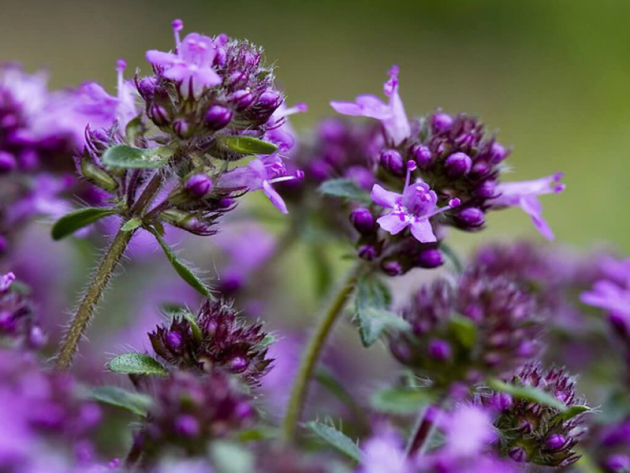
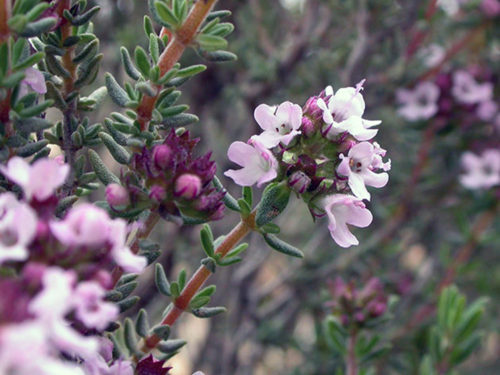
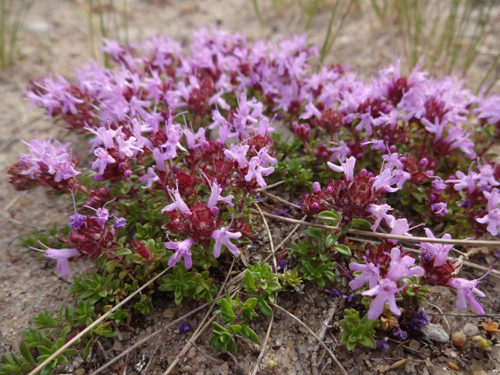
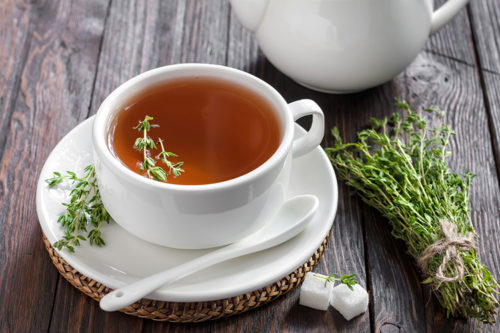

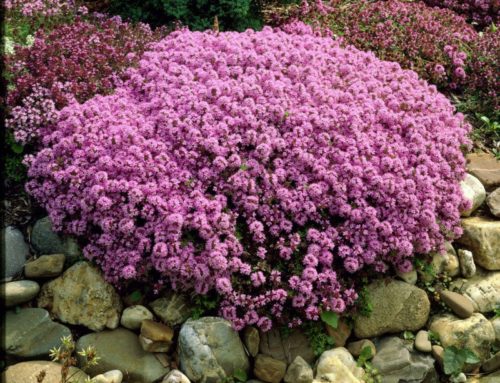
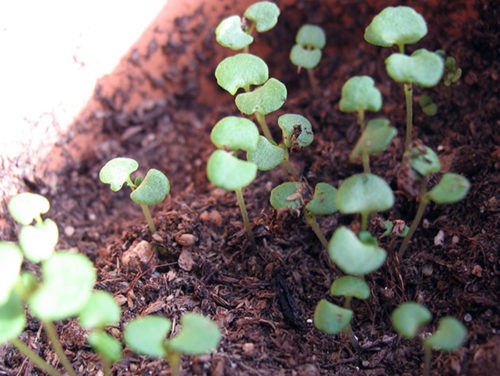
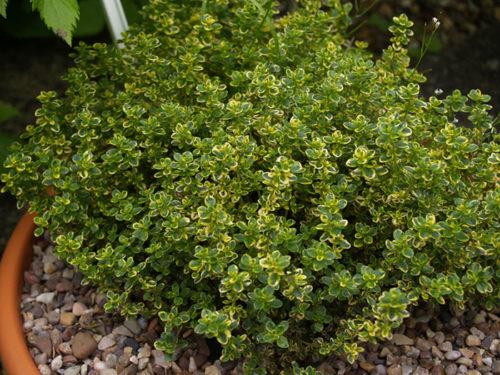

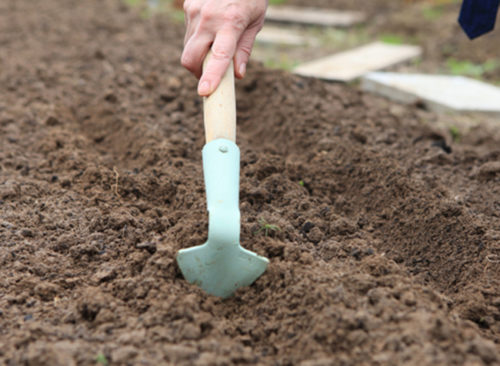
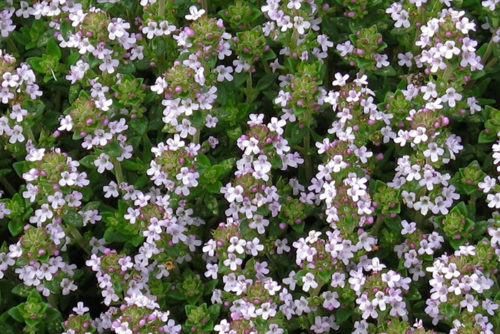

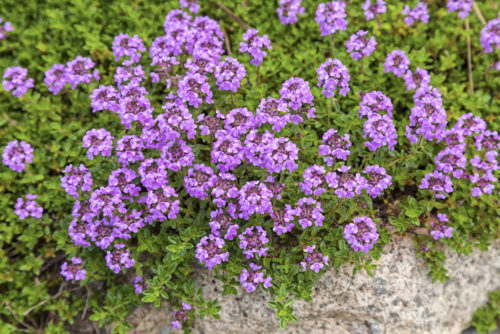
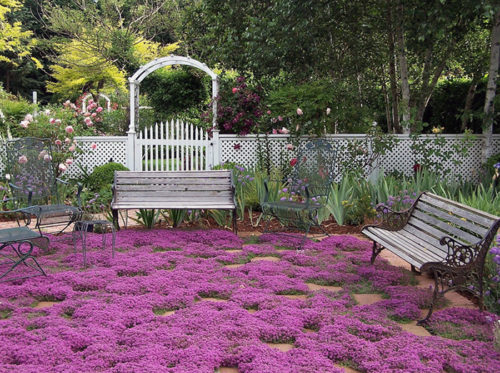
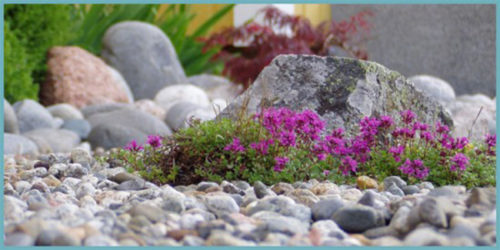












 Start a discussion ...
Start a discussion ...